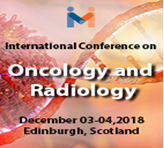Cardiac Risk Stratification in Bone Marrow Transplant Recipients with Myelodysplastic Syndrome: The Role of Multimodal Imaging
Multimodal imaging techniques have significantly enhanced our understanding and management of cardiovascular diseases. Some of the methods include echocardiography, Myocardial Perfusion Imaging (MPI), Cardiac Computed Tomography (CCT), Cardiac Magnetic Resonance Imaging (CMR), and nuclear cardiology Single Photon Emission Computed Tomography (SPECT) and Positron Emission Tomography (PET). These methods are frequently combined to detect high-risk cardiovascular comorbidities in both symptomatic and asymptomatic individuals, enabling prompt interventions that positively impact overall survival. We present the case of a 74-years-old male with Myelodysplastic Syndrome (MDS) who underwent comprehensive cardiovascular risk assessment before Hematopoietic Stem Cell Transplantation (HSCT), revealing significant coronary artery disease alongside his comorbidities and risk factors. His initial evaluation with Transthoracic Echocardiography (TTE) showed normal overall Left Ventricular (LV) peak systolic average Global Longitudinal Strain (GLS) and Left Ventricular Ejection Fraction (LVEF). At the same time, MPI revealed no significant reversible ischemia and a normal LVEF by quantitative assessment, indicating low cardiovascular risk based on the interpretation of these results. However, the TTE image review by the clinician revealed LV regional strain abnormalities and the MPI review noted upper-normal Transient Ischemic Dilatation (TID) with an associated inferior predominantly fixed defect. Pre-HSCT surveillance Computed Tomography (CT) image review also incidentally revealed extensive coronary artery calcification. Cardiac catheterization confirmed triple vessel Coronary Artery Disease (CAD), and the patient subsequently underwent Coronary Artery Bypass Grafting (CABG) to mitigate cardiovascular risk and optimize health post-HSCT. This case highlights the critical role of multimodal cardiac imaging in cardiovascular risk stratification for patients undergoing HSCT, emphasizing the need for clinicians to incorporate all available imaging techniques to improve cardiovascular outcomes in this patient population.
 Spanish
Spanish  Chinese
Chinese  Russian
Russian  German
German  French
French  Japanese
Japanese  Portuguese
Portuguese  Hindi
Hindi 



